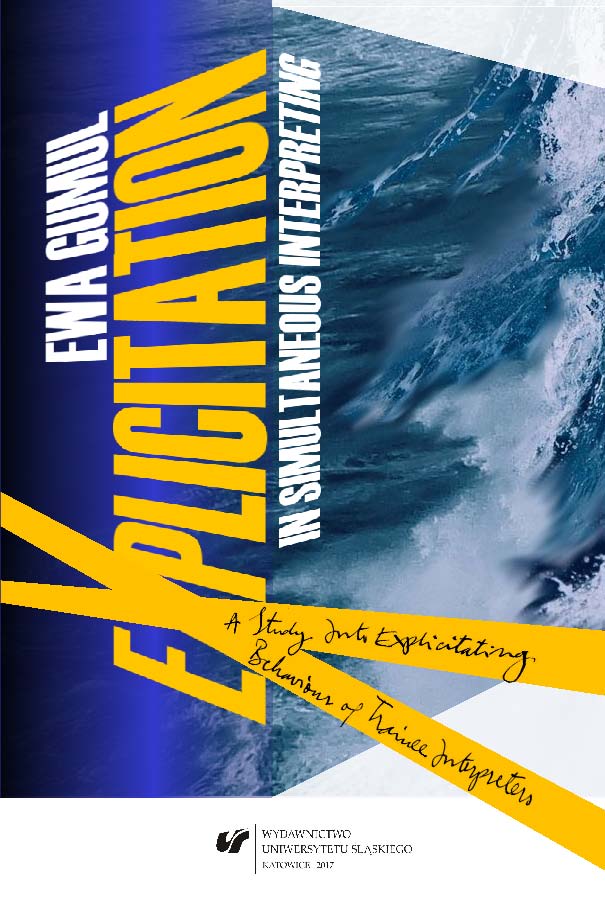Explicitation in Simultaneous Interpreting. A Study into Explicitating Behaviour of Trainee Interpreters
Explicitation in Simultaneous Interpreting. A Study into Explicitating Behaviour of Trainee Interpreters
Author(s): Ewa Gumul
Subject(s): Language and Literature Studies, Applied Linguistics, Translation Studies
Published by: Wydawnictwo Uniwersytetu Śląskiego
Keywords: Explanation; simultaneous interpretation; limitations in interpretation; retrospective protocols; directionality; interpretation strategies; interpreter style
Summary/Abstract: The simplest and the most blunt definition of explicitation I can think of is that it is about adding. This imprecise and simplistic definition brings to my mind a certain interpreter who probably resorted to the most extensive additions I have ever heard of. It is Juan Ranz – one of the best-known interpreters, although he is only a fictional character in Javier Marías’s novel A Heart So White.1 It is his brilliantly unfaithful translation, full of additions, that transforms meaningless and insipid small talk of a Spanish and an English politician into a passionate conversation about love and Shakespeare. Thanks to the interpreter’s deliberate additions, the interlocutors become so involved that we come to think that perhaps he merely explicitates what in fact they meant and wanted to say. Obviously, explicitation is not about changing the course of conversation, as was the case of Juan Ranz, but the fictional interpreter in Marías’s book is a perfect example, albeit somewhat extreme (the right of literature, one may say), of an interpreter’s mediating role. In real life, interpreters do not add anything that could change the message, but they do add – usually to mediate the message. And such “additions,” denominated explicitations, appear to be a universal feature of all translational activity irrespective of the mode, genre, and language pair. / fragment of the introduction/
Series: Językoznawstwo
- E-ISBN-10: 978-83-226-33
- Print-ISBN-13: 978-83-226-3234-5
- Page Count: 332
- Publication Year: 2017
- Language: English
- eBook-PDF
- Sample-PDF

